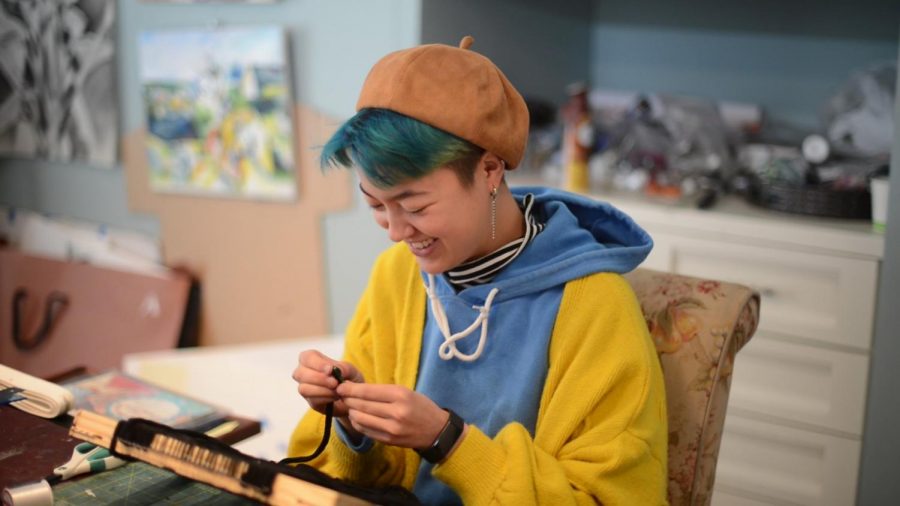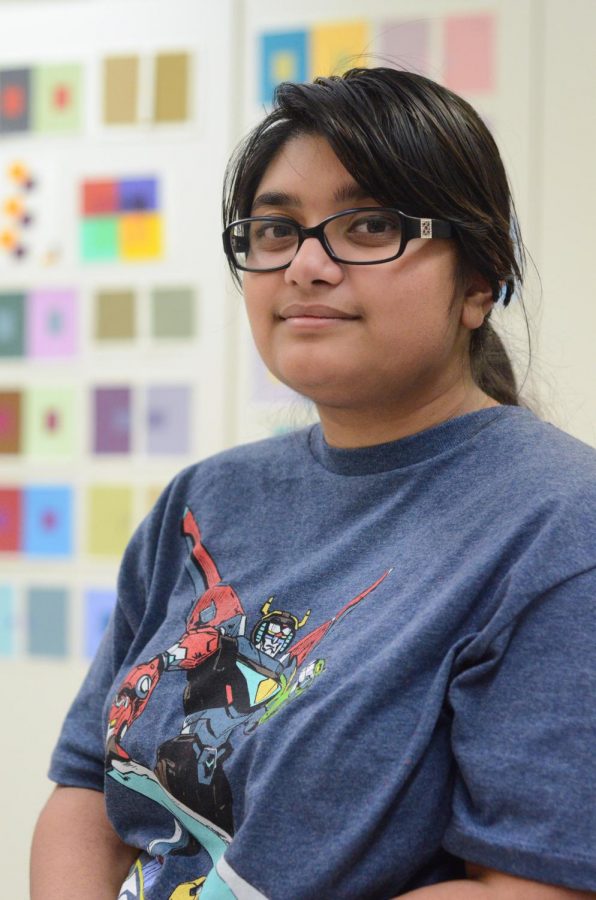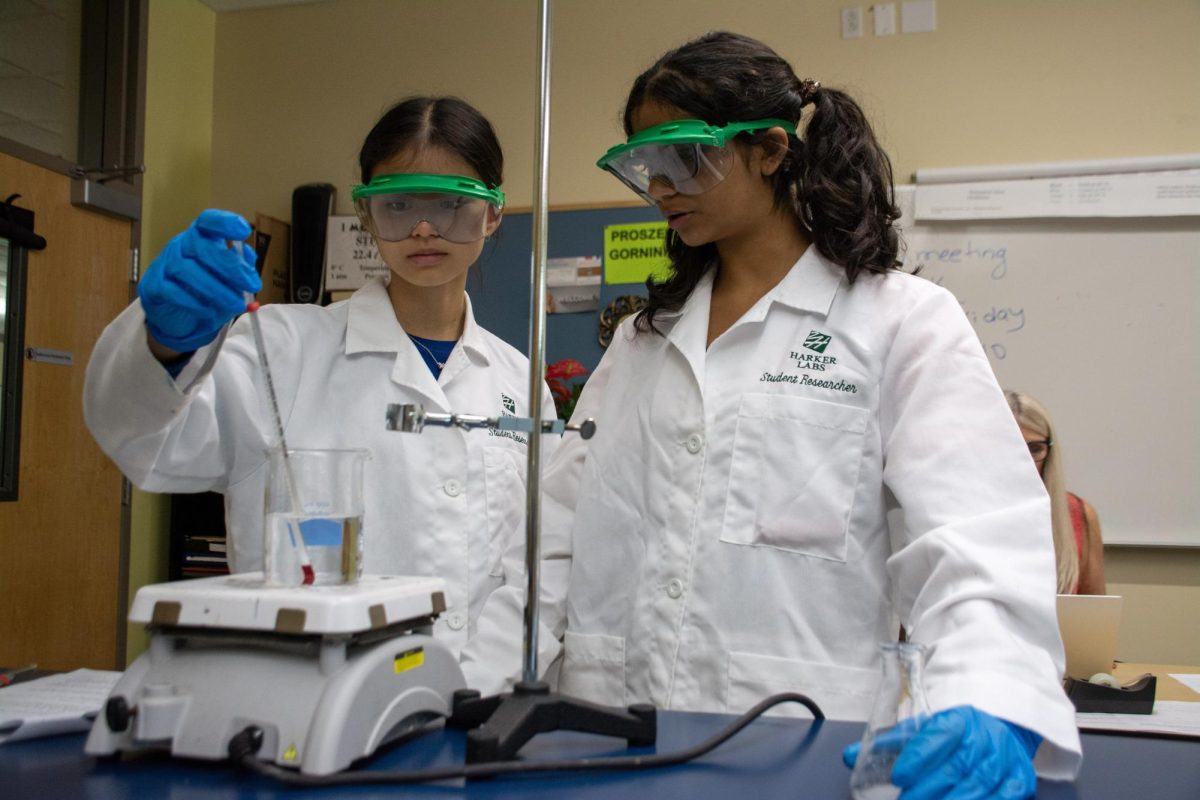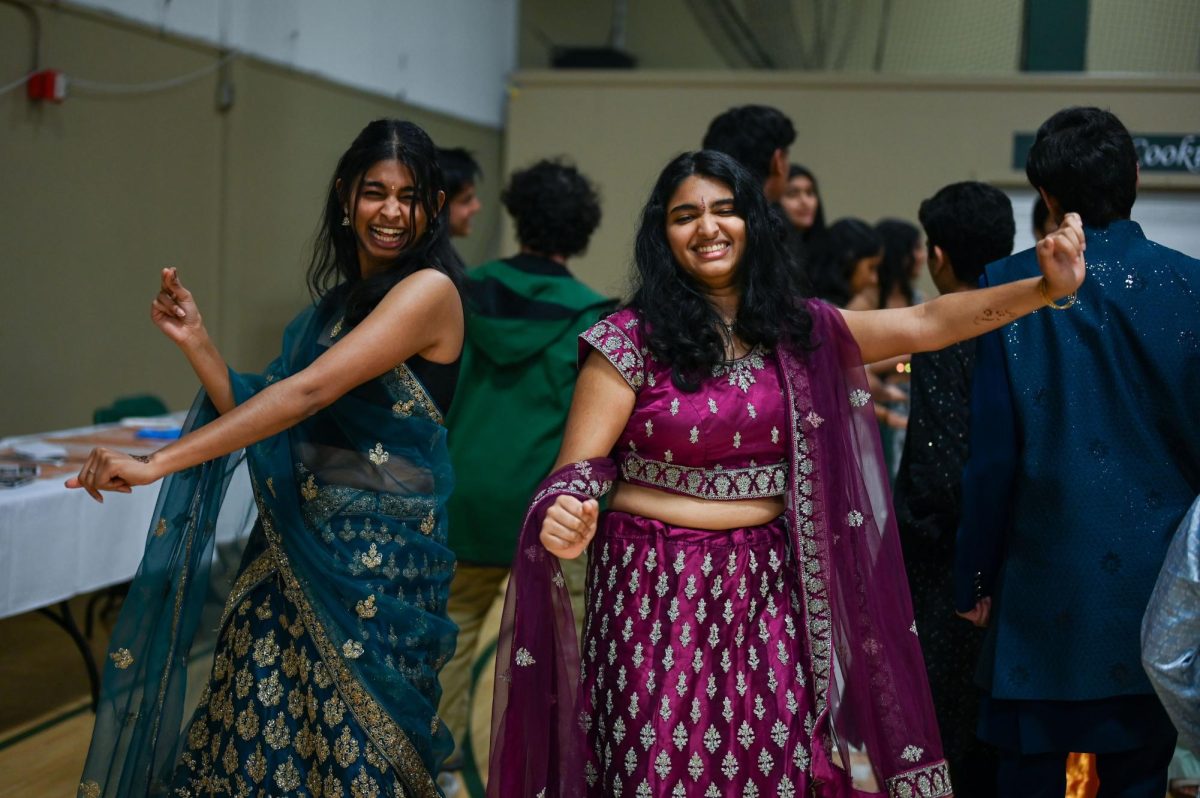Humans of Harker: Deb Chatterjee challenges media stereotypes with art
Nilisha Baid
“I think, if you’ve noticed, a lot of popular things only have white people in them,” Deb Chatterjee (12) said. “I wish people would care more about supporting creators of color. I feel like it’s not enough to not be racist, like that’s the lowest line you have to clear. I think you have to support people of color besides issues of racism; you should be looking at their creative stuff too. When I was a kid, it kind of bothered me that in the books and stuff I was reading I never saw characters that looked like me… I want to be the person who puts their stories up.”
February 20, 2018
Deb Chatterjee (12) brings coffee with her everywhere, the caffeine fueling her through long hours of creative writing and drawing. She writes stories; she sells prints on commission in her shop.
“I find inspiration from really weird places,” she said. “Sometimes I’ll just dream about an idea, and I’ll be like, ‘Oh, I want to draw that.’ Usually if I saw a TV show or I read a book, that’s usually where I get my inspiration from, or if I heard a really good song and it motivated me to draw. I go and people watch in the park sometimes to get ideas for poses in my art, and I read a lot. Pretty much everything about my life is kind of tailored towards creating.”
Having immersed herself in books from a young age, Deb began to notice a lack of diversity and felt compelled to include it in her own writing.
“I think, if you’ve noticed, a lot of popular things only have white people in them,” she said. “I wish people would care more about supporting creators of color. I feel like it’s not enough to not be racist, like that’s the lowest line you have to clear. I think you have to support people of color besides issues of racism; you should be looking at their creative stuff too.”
As an artist, she aims to promote the people of color in media that she yearned for as a child.
“When I was a kid, it kind of bothered me that in the books and stuff I was reading I never saw characters that looked like me,” she said. “I think what I want to do as a creator is make the same kind of stories I liked to see as a kid but for kids like me growing up, who see a lot of other things, and they’re just not in that content. I want to be the person who puts their stories up.”
Pilar Agüero-Esparza, Deb’s art teacher of three years, admires the way she addresses these issues in her classes.
“She’s always been a bit more on the quiet side, but as I’ve gotten to know her, it’s like, ‘Wow, still waters run deep,’” Agüero-Esparza said. “When we’re in critique, I can pretty much rely on Deb to be able to bring up certain things about race, politics, male gaze, all these things, gender issues when we’re critiquing work, which is really refreshing because sometimes students will stay away from that, but Deb is a great contributor in that way.”
To portray diversity, Deb makes an effort to interact with people from various backgrounds.
“I remember I took this summer class, and all the students happened to be exchange students, so the experience they had was completely different from mine,” she said. “I really was interested in that, and I spent a lot of time talking to them. I just want to make stories that everyone can find a place for themselves in.”
Her close friend Raveena Panja (12) noted her empathetic nature.
“She always knows when you’re feeling down,” she said. “She’ll always try to make you happy, make you feel better, just by telling jokes or showing dog or cat pictures. Just little things like that.”
Felix Roman, one of Deb’s friends, agreed with Raveena, calling Deb “kind” and “caring.” But he also mentioned her more playful side.
“[I’ll] say something stupid; she’ll tell me I deserve some form of retribution or I should perish or I should halt,” he said, laughing. “Then I’ll say something even more stupid, and it’s just her giving me glares sometimes.”
Despite the negative mentality she combats through her art, Deb avoids the cynicism that plagues the stereotypical “tortured artists.”
“I have really conservative grandparents, and I remember them always telling me, ‘You just can’t trust other people, they’re always going to try to take advantage of you,’ because that’s the environment they grew up in,” she said. “They lived in a really traditional part of India, and I could see where they’re coming from, and I could respect that they just wanted to protect me, but also, I think closing yourself off all the time just isn’t healthy. I didn’t want to be like that.
As a result, she chooses to maintain an unfailing positive attitude towards others.
“Especially now, it might not seem like this is true, but I genuinely think that people are good fundamentally, and it’s just their experiences that make them bad,” she said. “I guess to that end, I try to believe the best in everyone because I really think at the end of the day, people would rather be good than bad. Maybe you don’t have to think like ‘Oh, this person must be good’ but at least keep a neutral stance. I think when you make preconceived notions of people, you kind of close yourself off, and who knows, that person could’ve been your best friend, but because of some idea you had about them, you just shut yourself off. I think that would be a waste.”

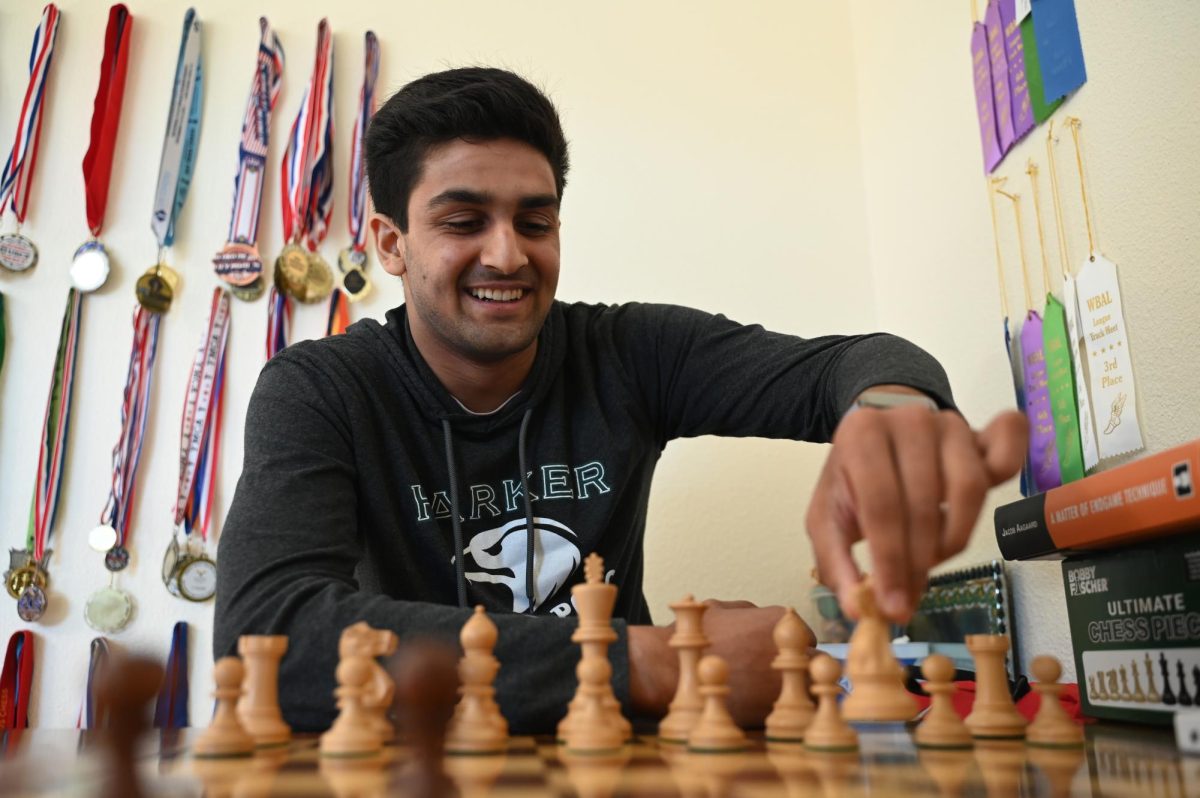
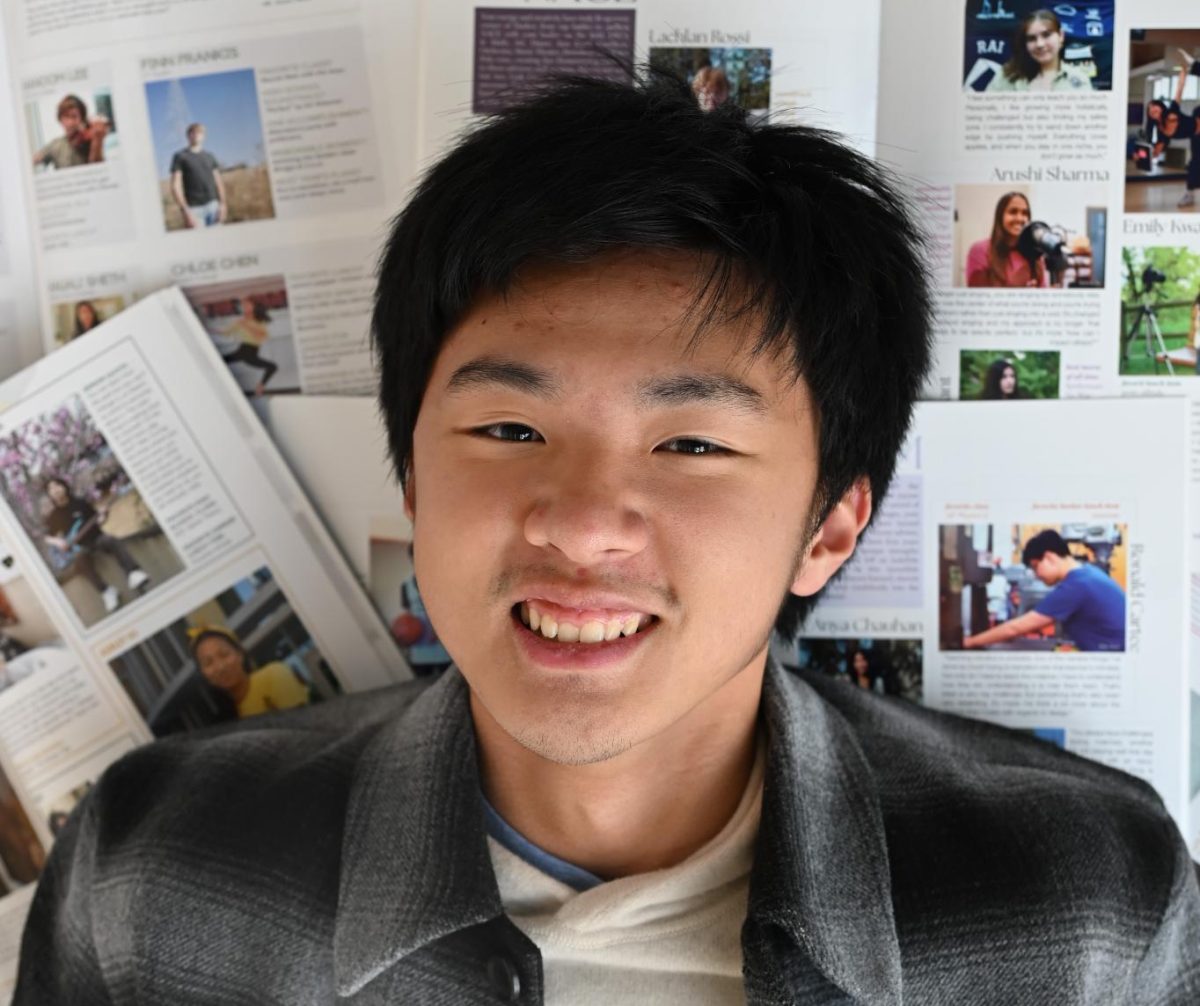
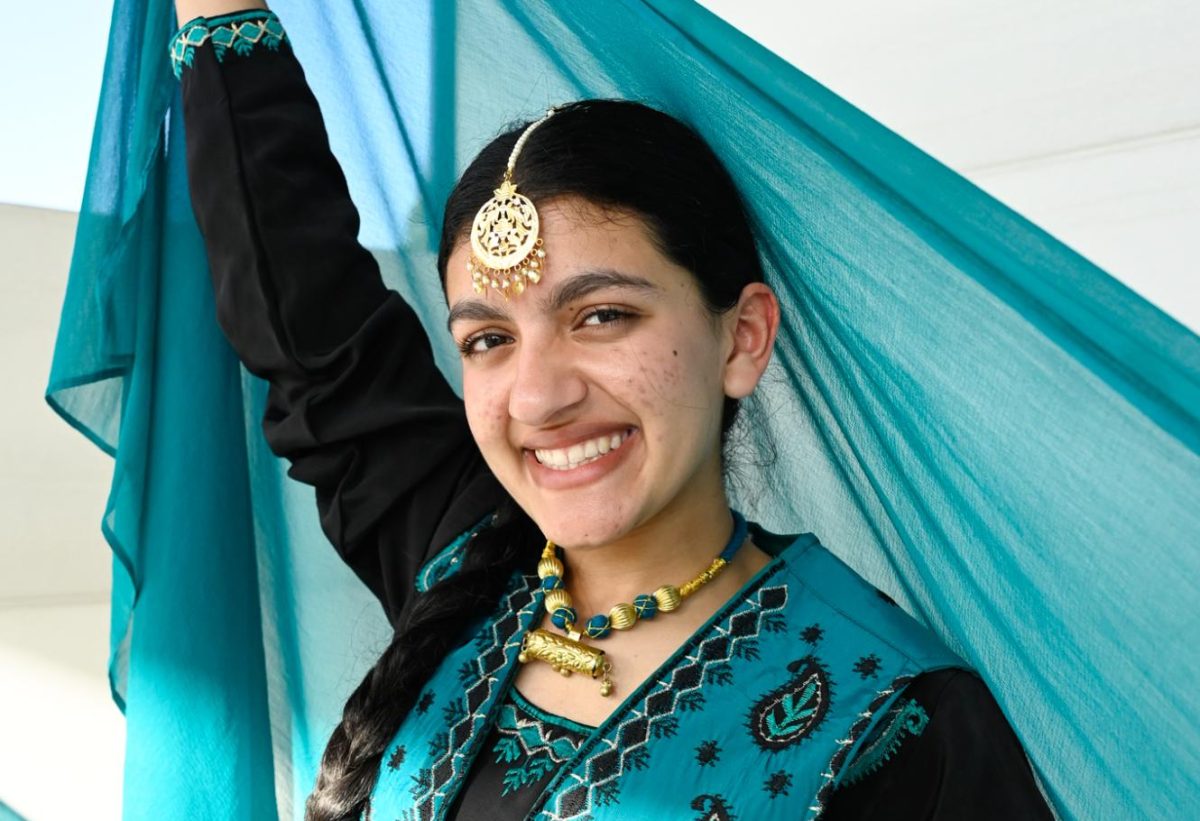
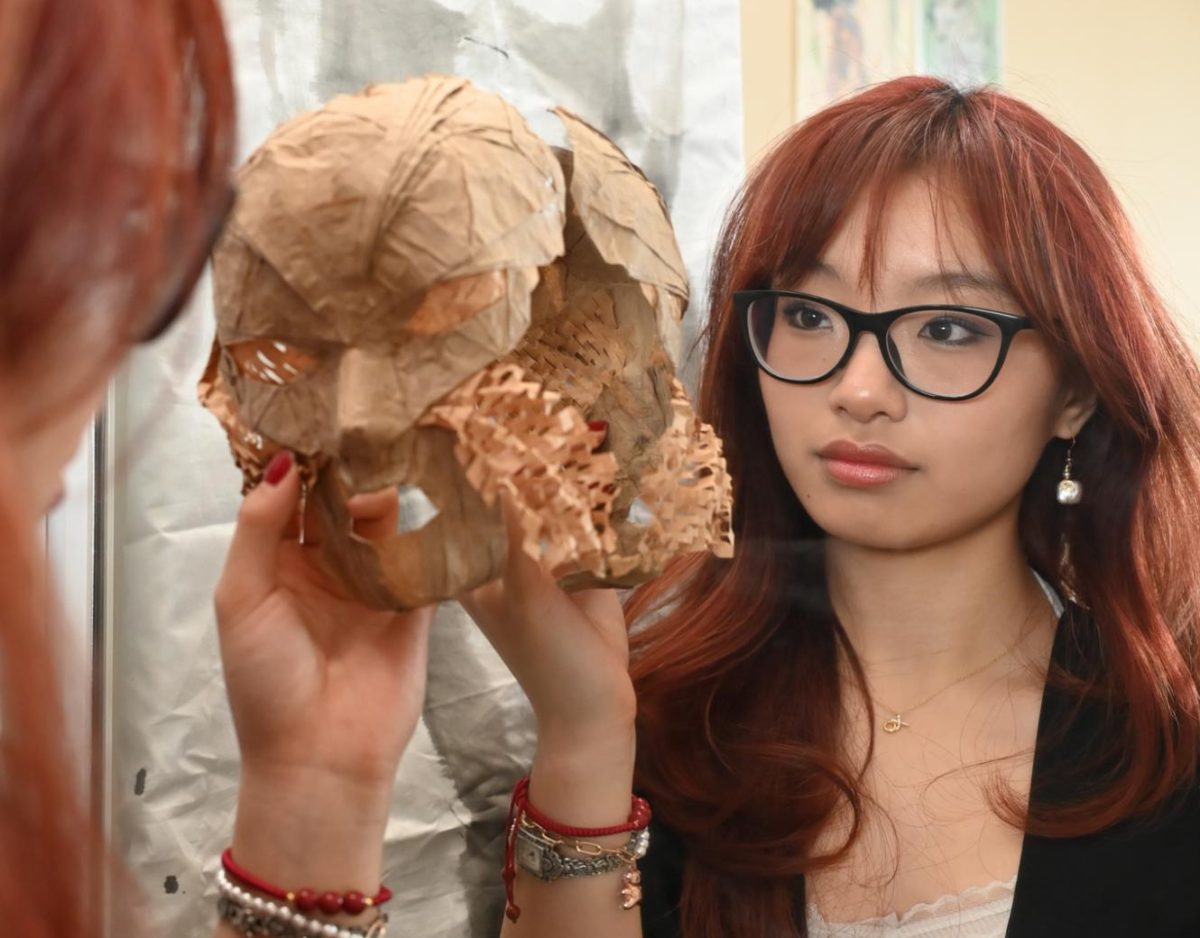
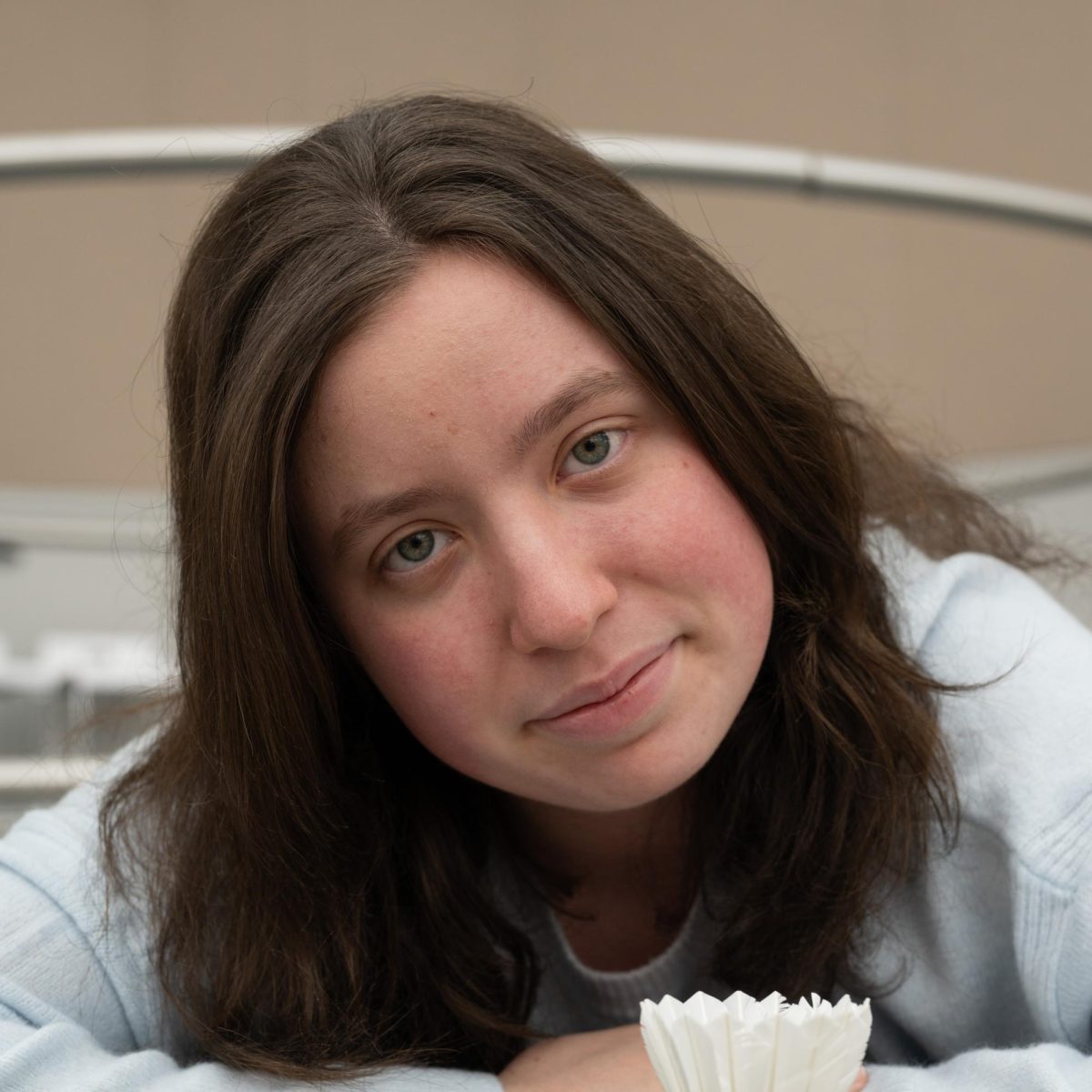
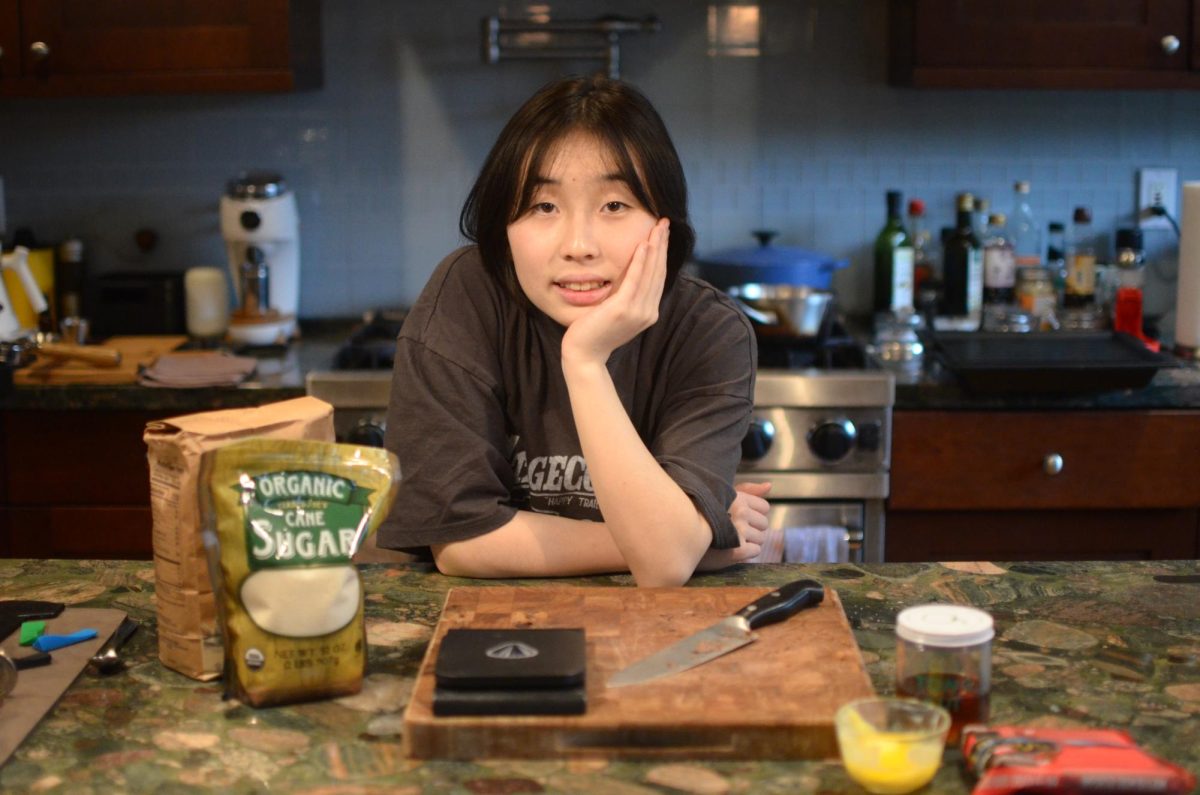
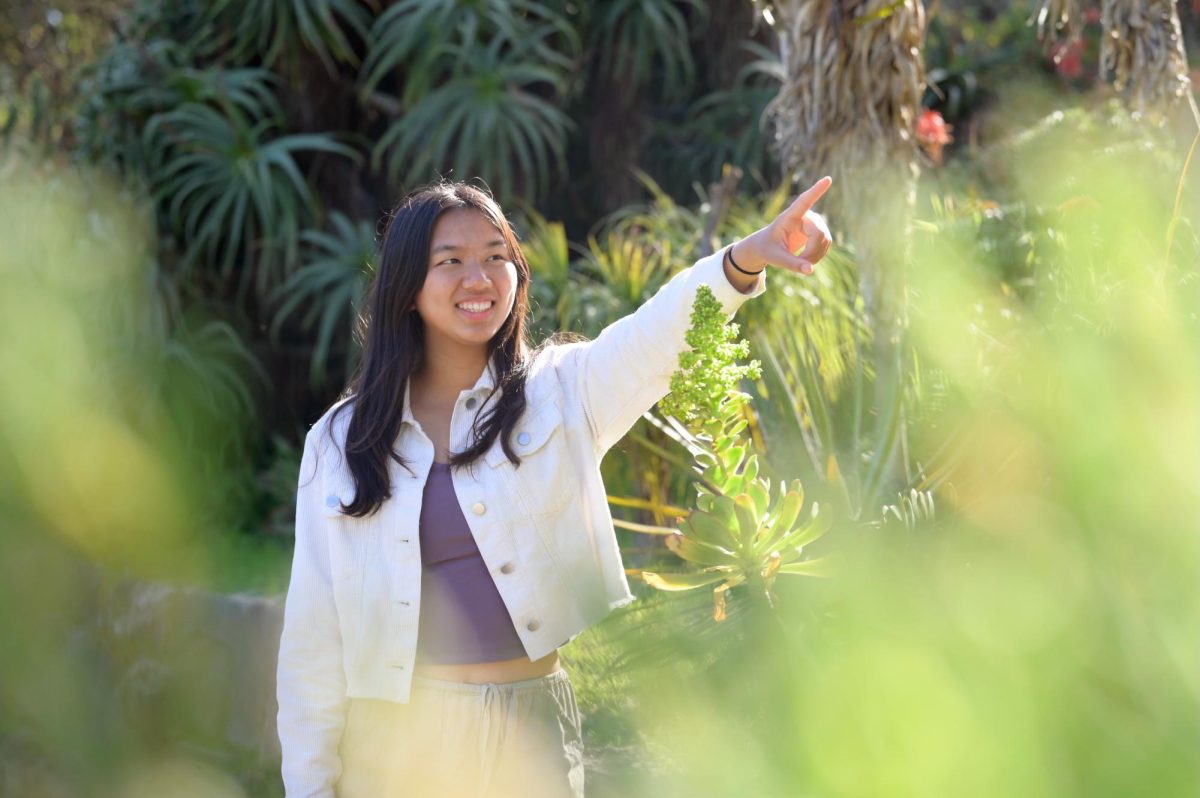
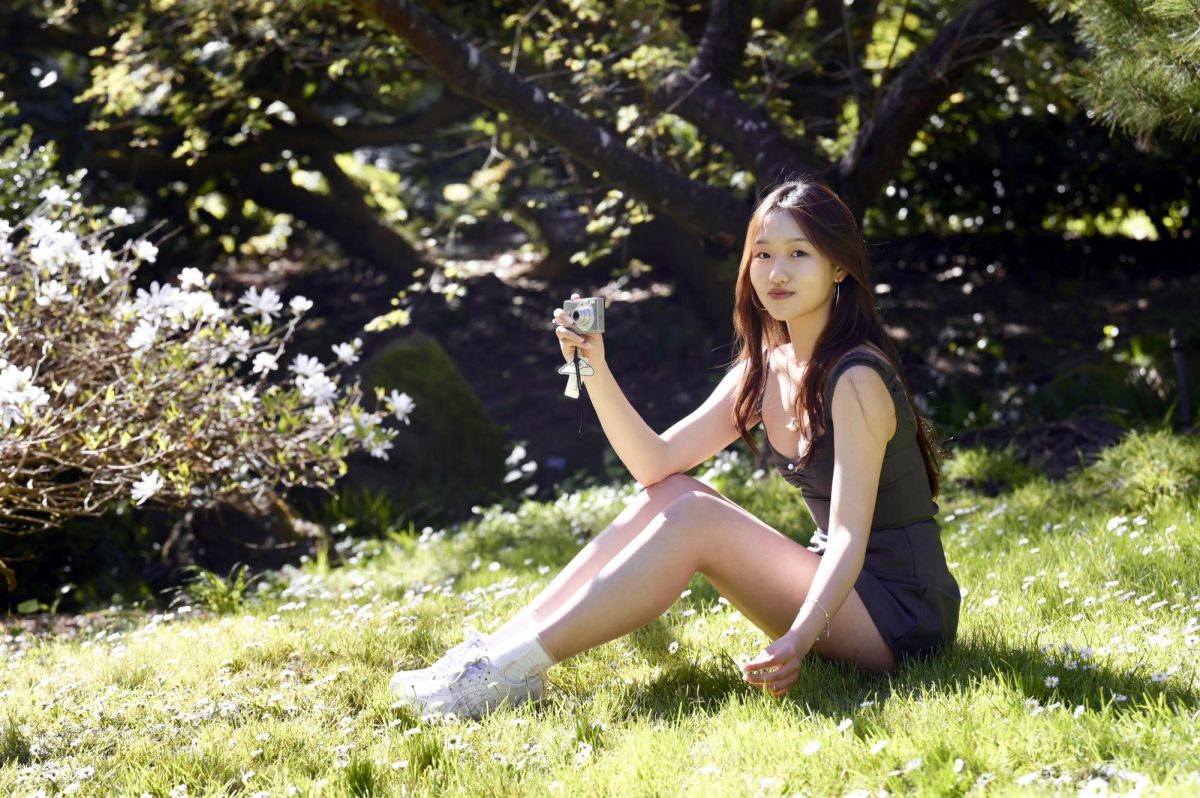
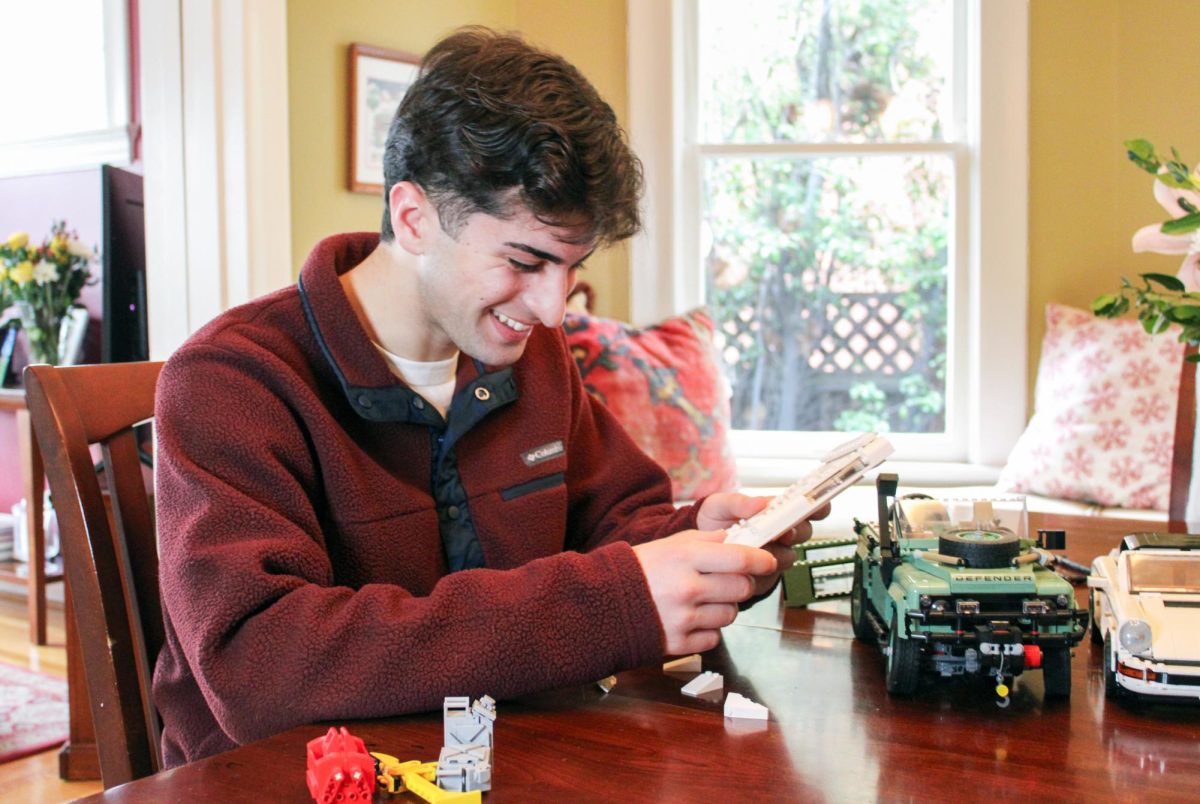
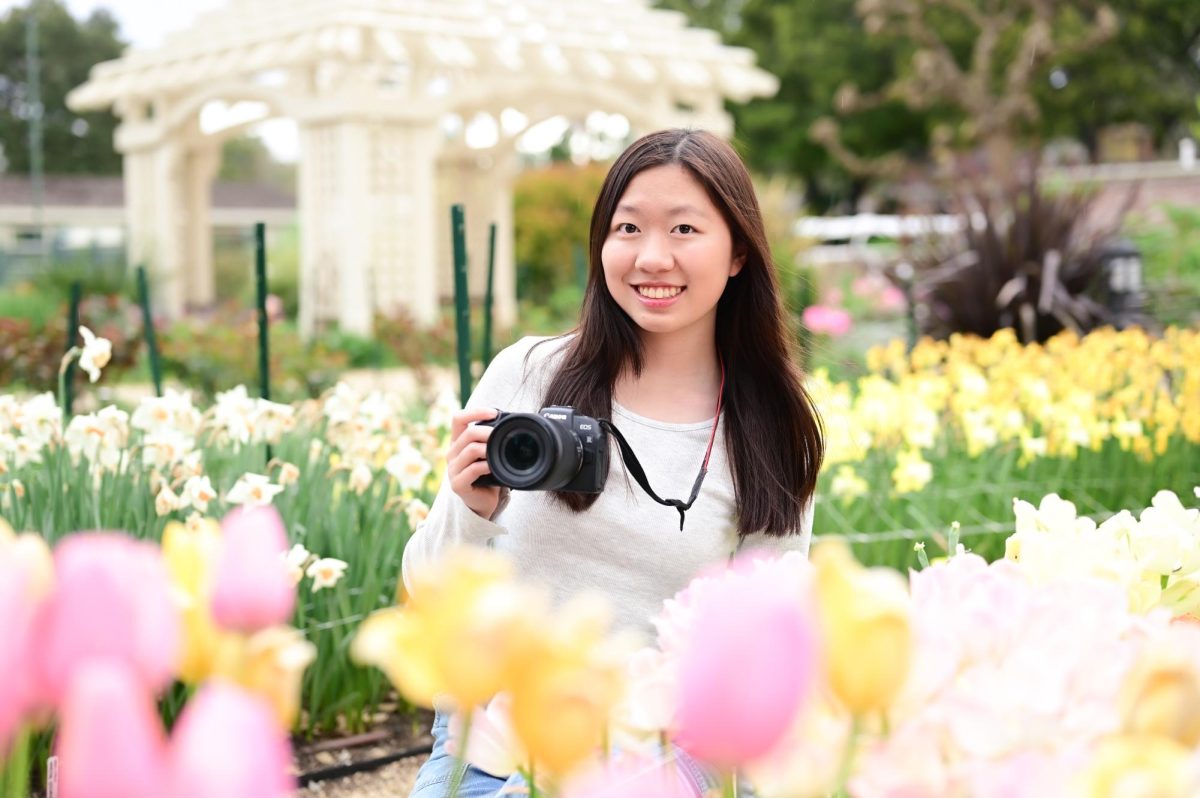

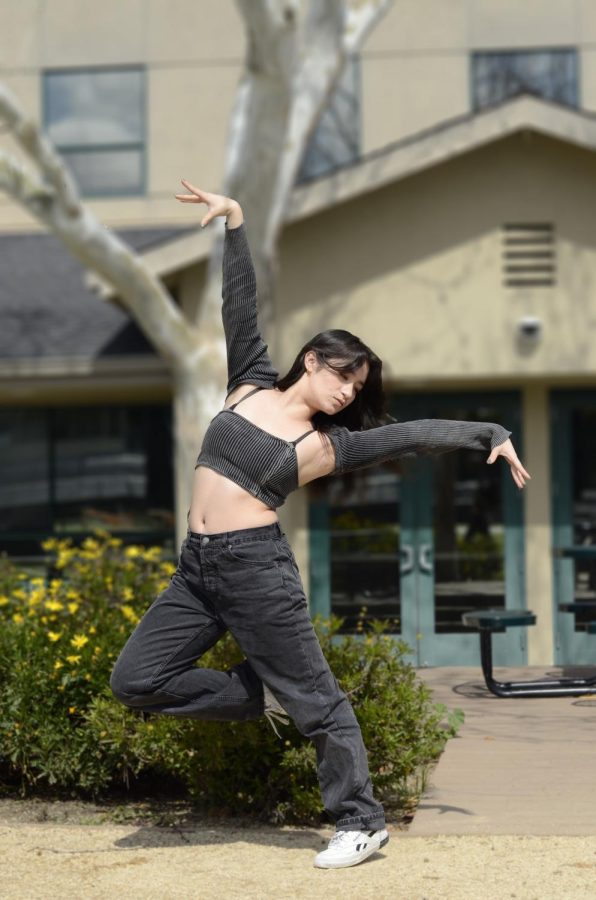
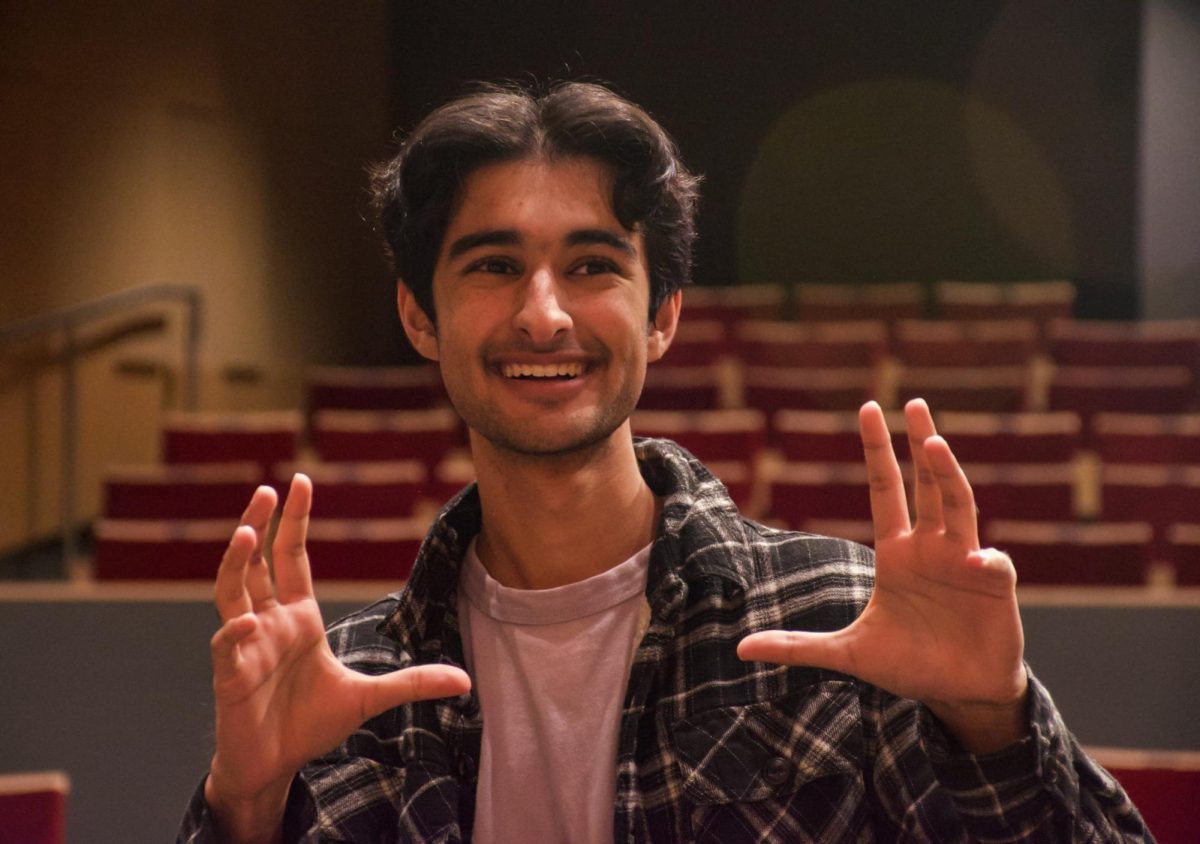
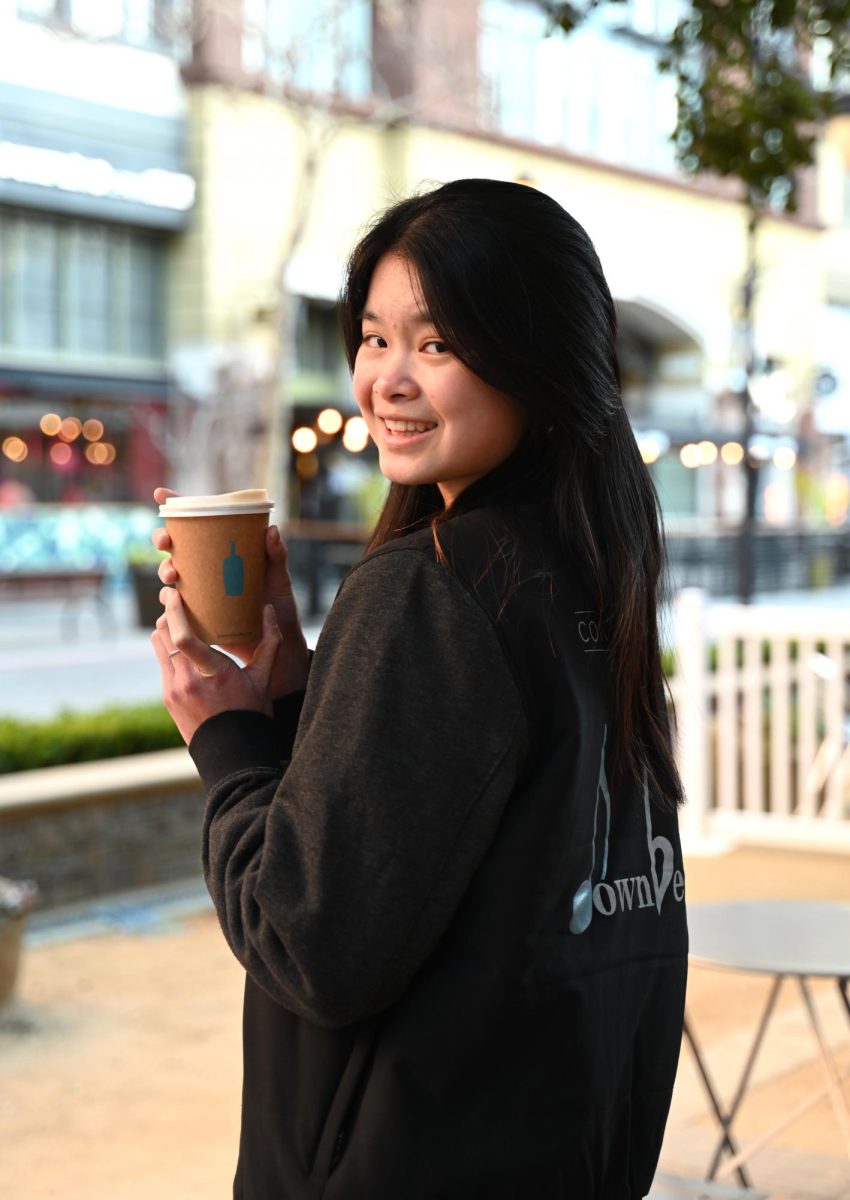
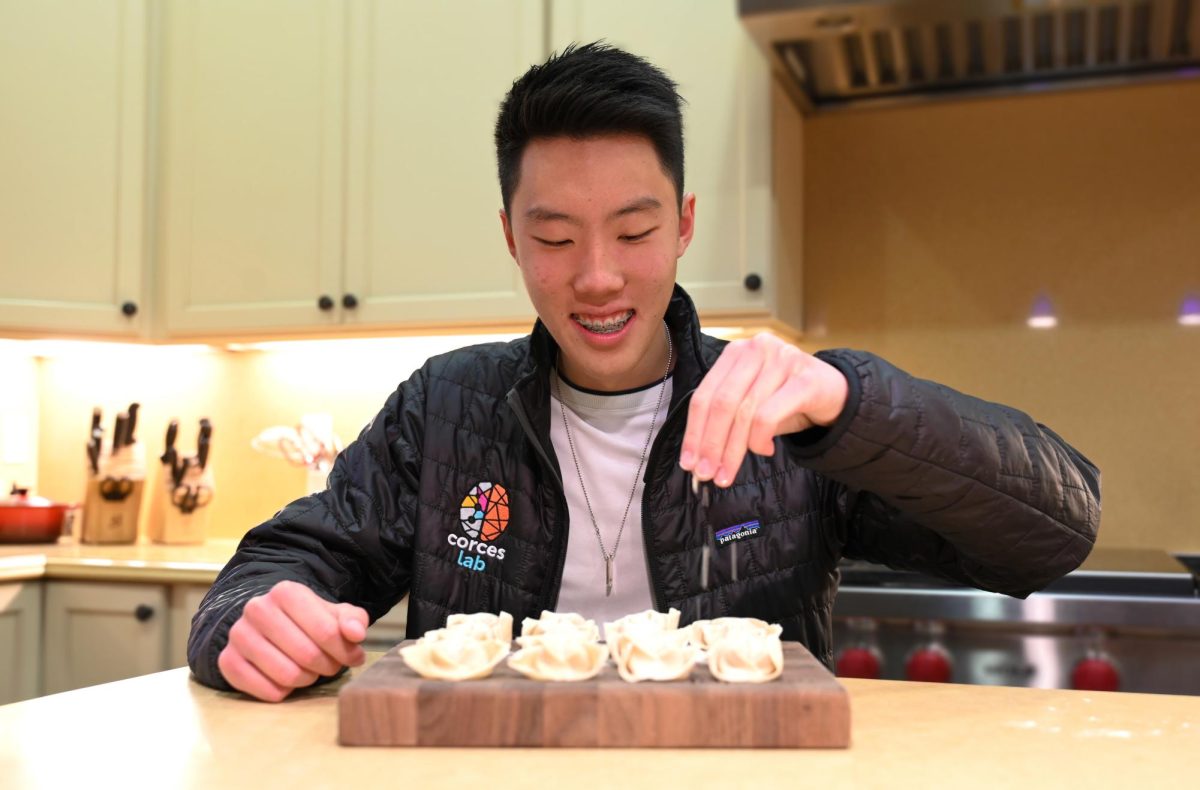
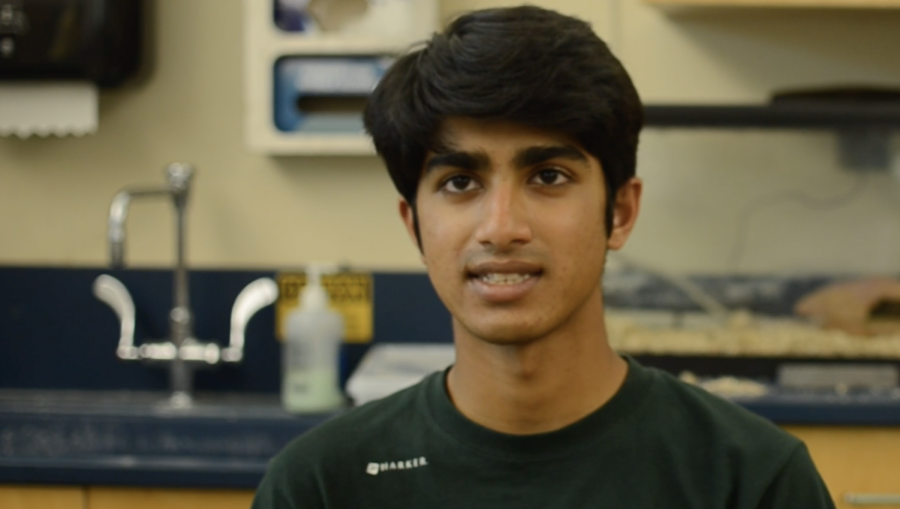
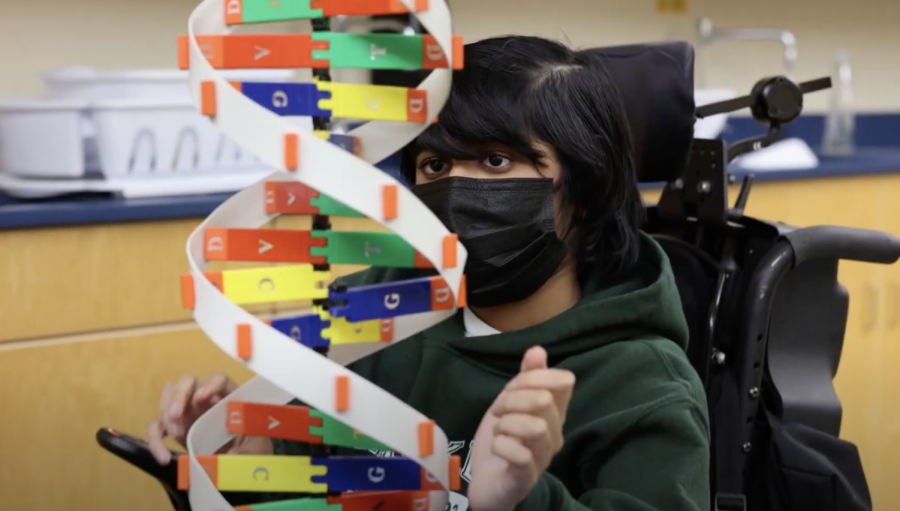
![“[Building nerf blasters] became this outlet of creativity for me that hasn't been matched by anything else. The process [of] making a build complete to your desire is such a painstakingly difficult process, but I've had to learn from [the skills needed from] soldering to proper painting. There's so many different options for everything, if you think about it, it exists. The best part is [that] if it doesn't exist, you can build it yourself," Ishaan Parate said.](https://harkeraquila.com/wp-content/uploads/2022/08/DSC_8149-900x604.jpg)

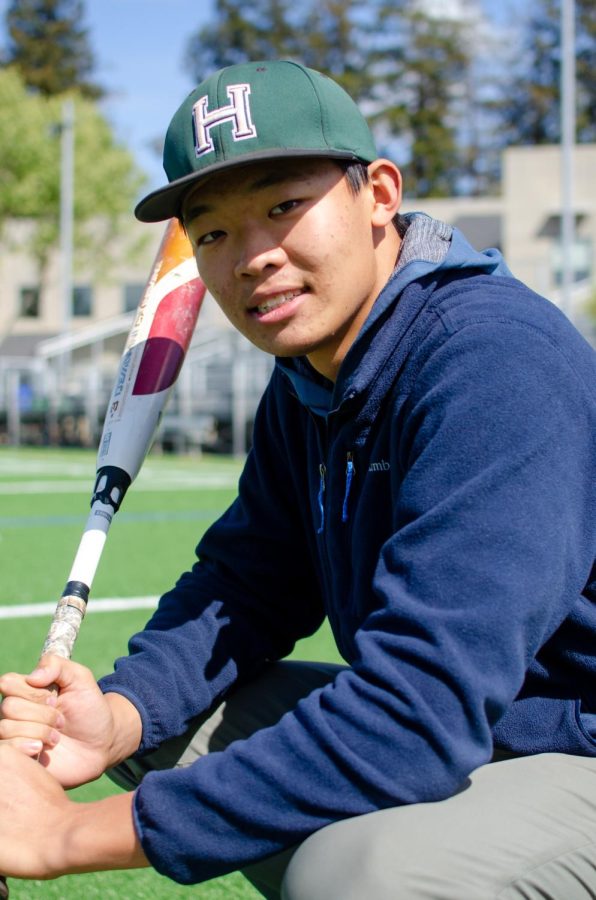
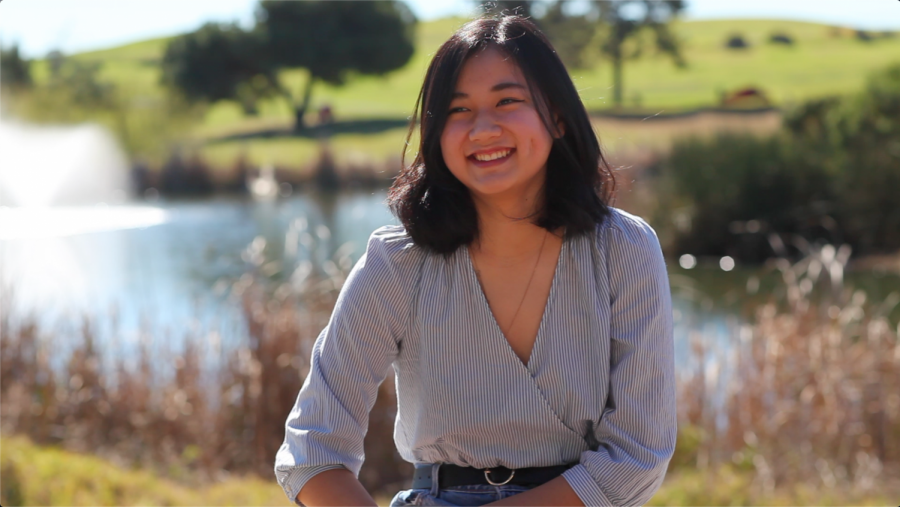
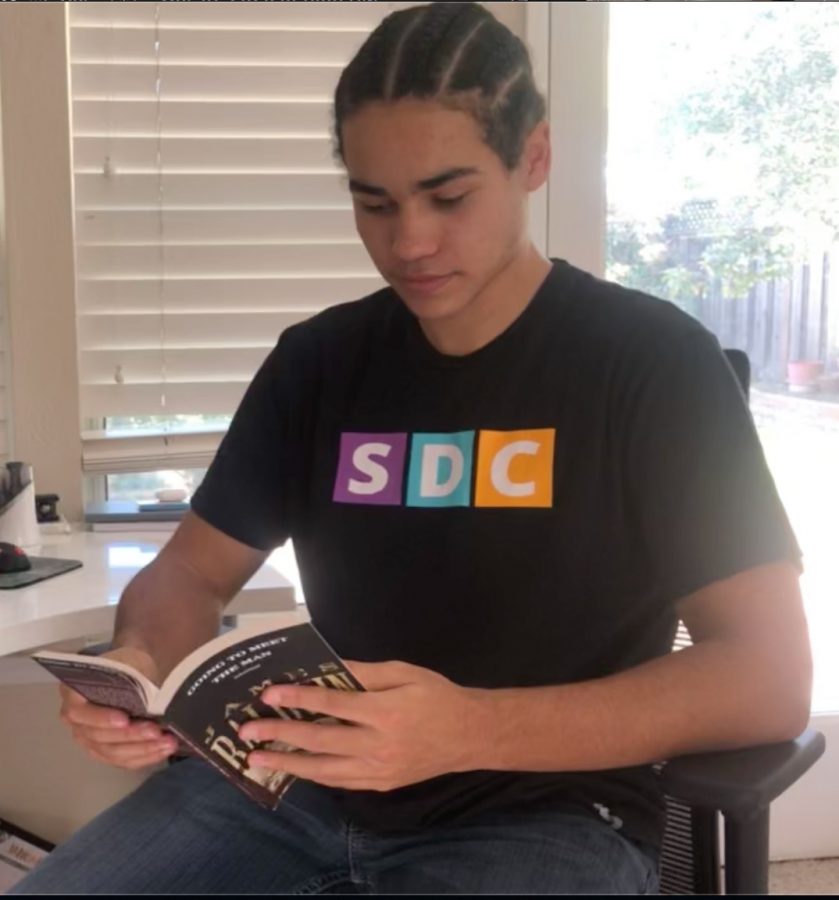
![“When I came into high school, I was ready to be a follower. But DECA was a game changer for me. It helped me overcome my fear of public speaking, and it's played such a major role in who I've become today. To be able to successfully lead a chapter of 150 students, an officer team and be one of the upperclassmen I once really admired is something I'm [really] proud of,” Anvitha Tummala ('21) said.](https://harkeraquila.com/wp-content/uploads/2021/07/Screen-Shot-2021-07-25-at-9.50.05-AM-900x594.png)
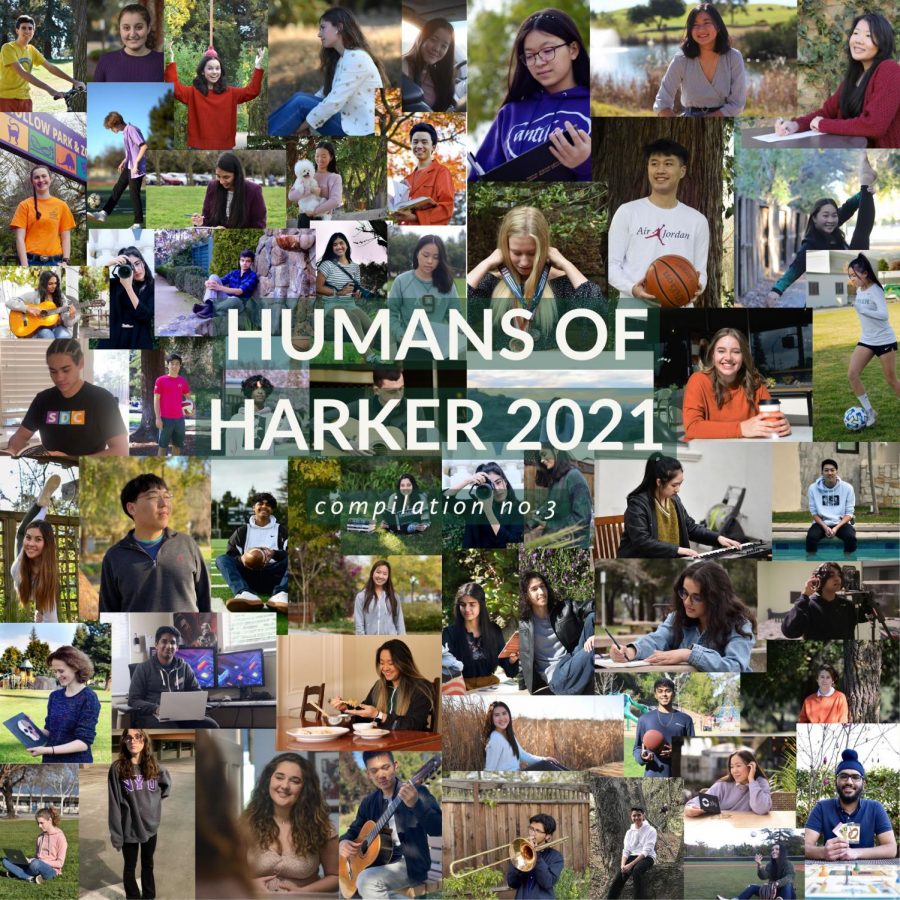
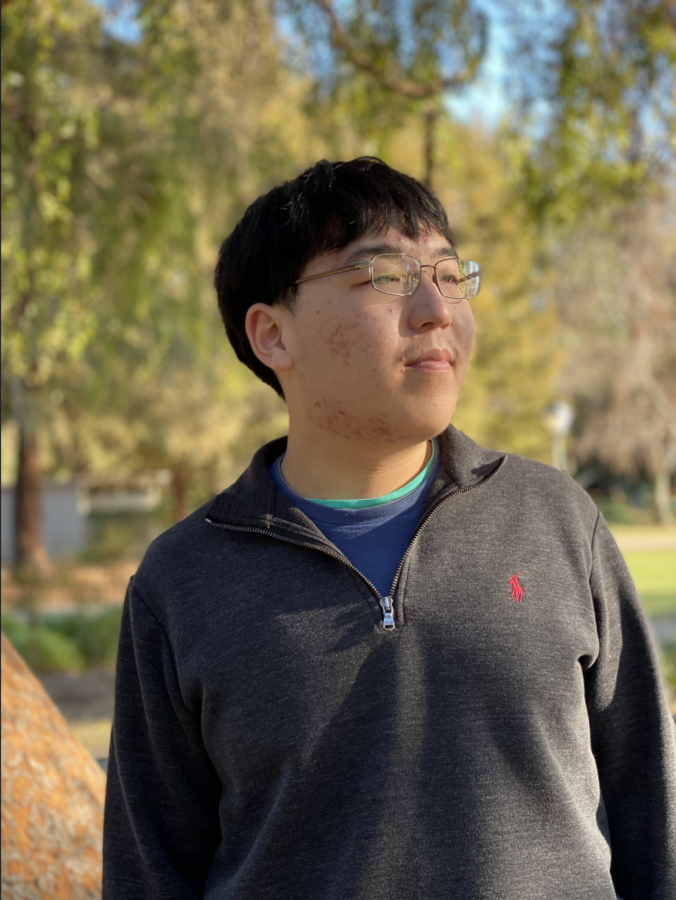
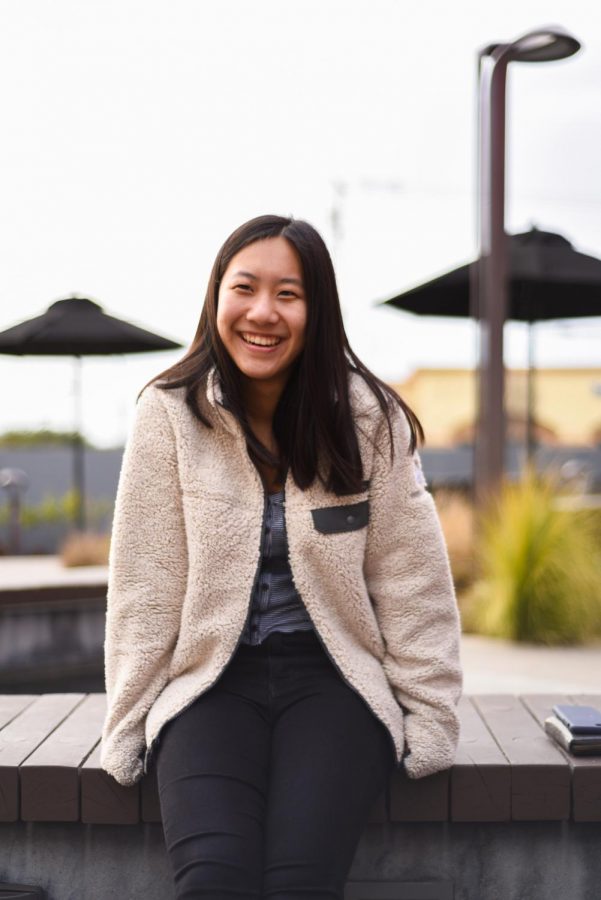
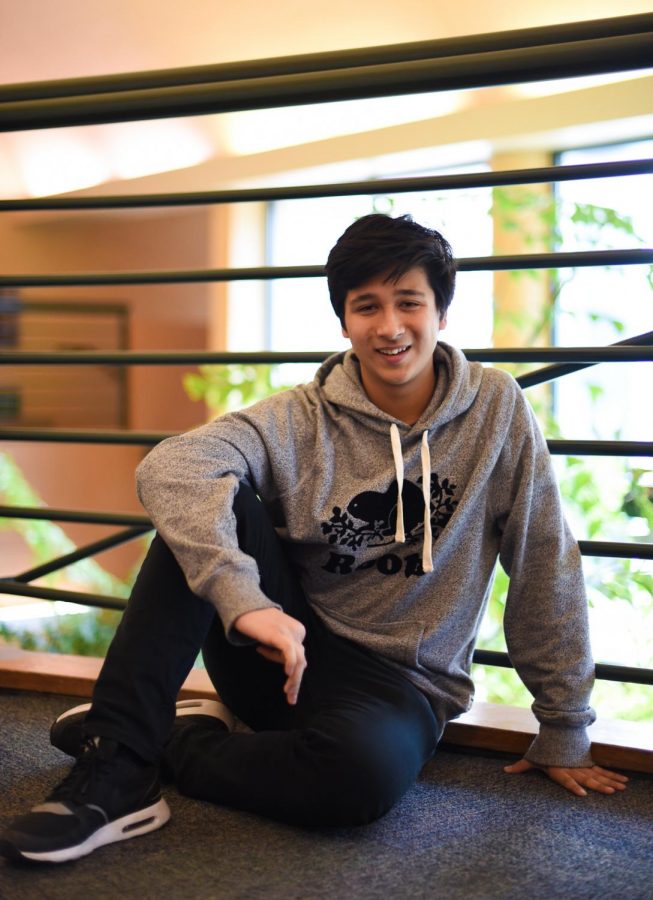
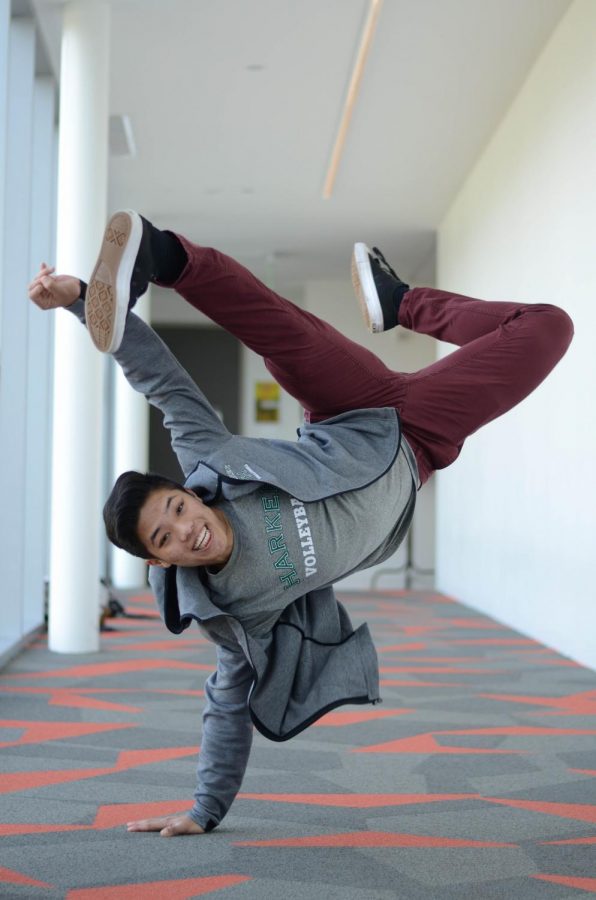
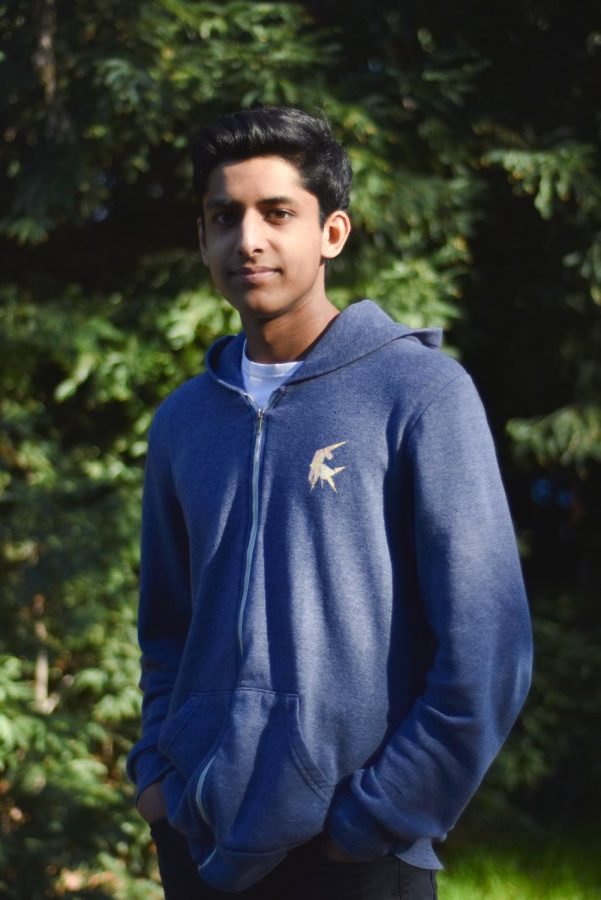
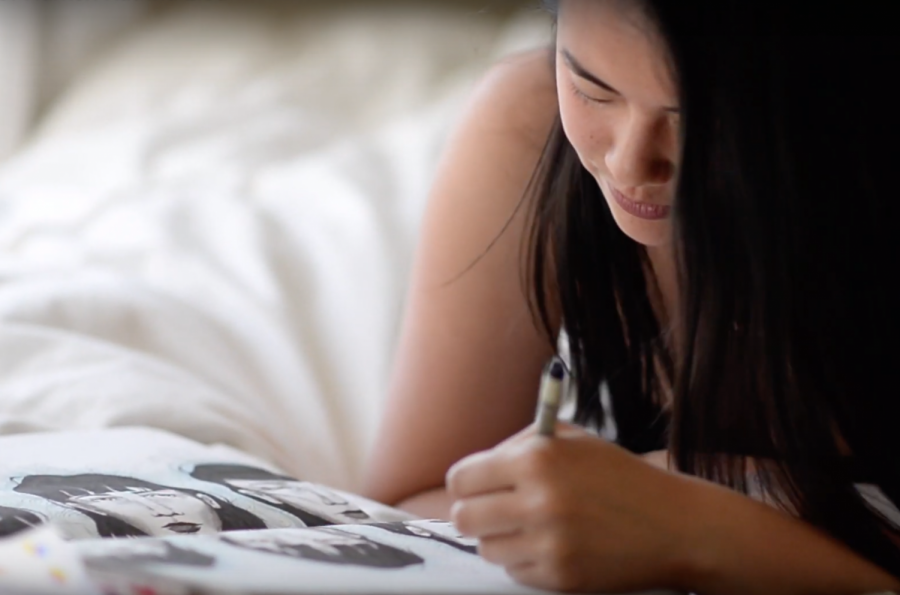
![“I think getting up in the morning and having a sense of purpose [is exciting]. I think without a certain amount of drive, life is kind of obsolete and mundane, and I think having that every single day is what makes each day unique and kind of makes life exciting,” Neymika Jain (12) said.](https://harkeraquila.com/wp-content/uploads/2017/06/Screen-Shot-2017-06-03-at-4.54.16-PM.png)
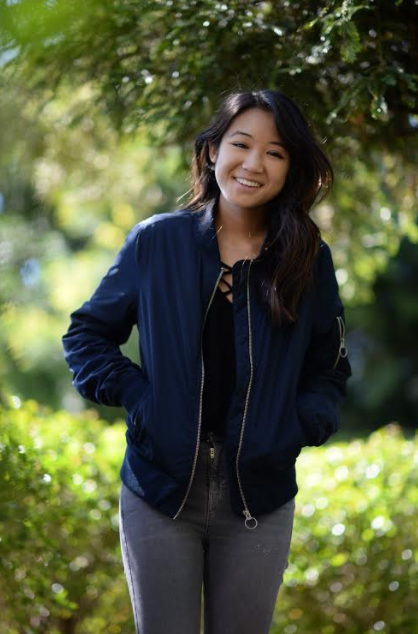


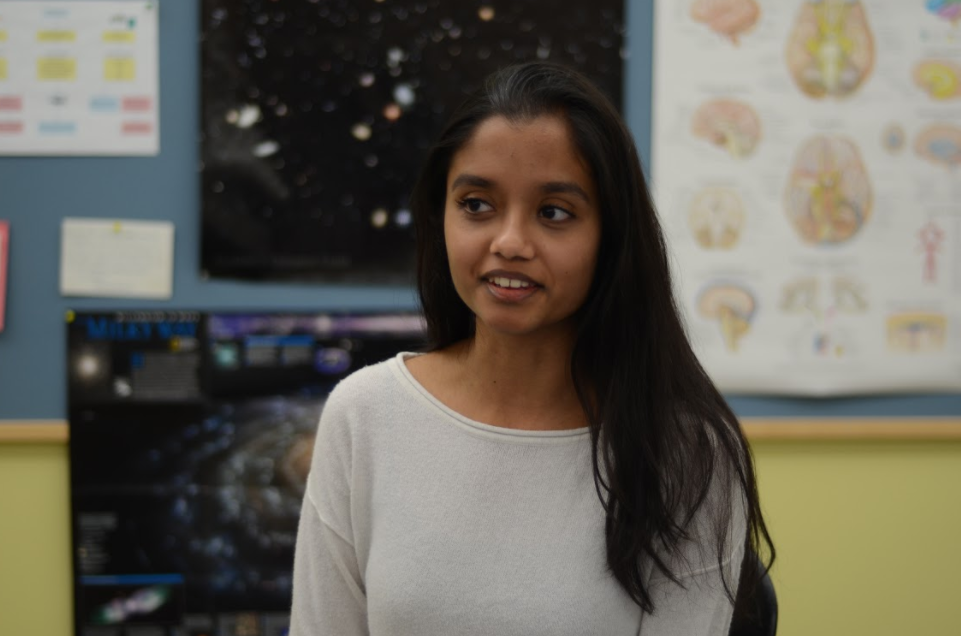
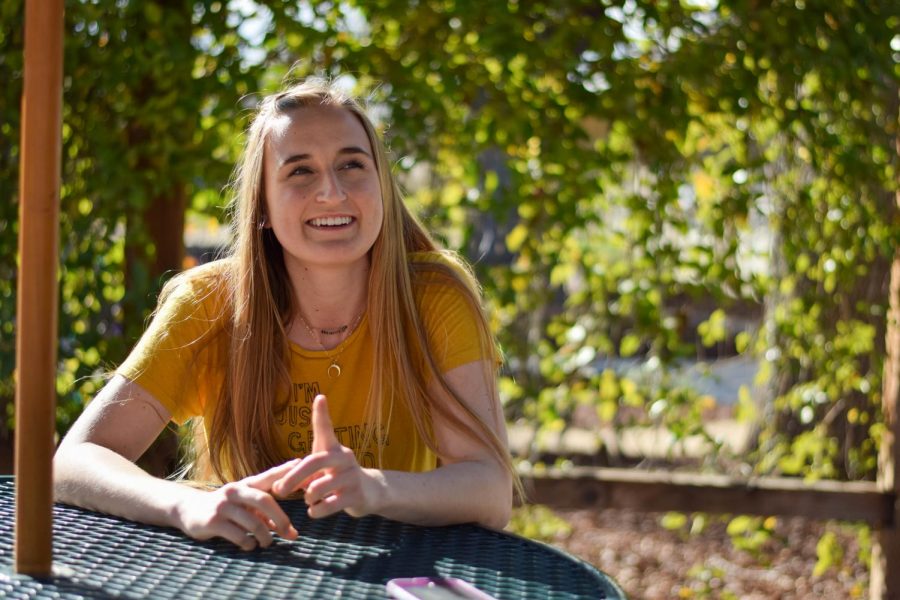
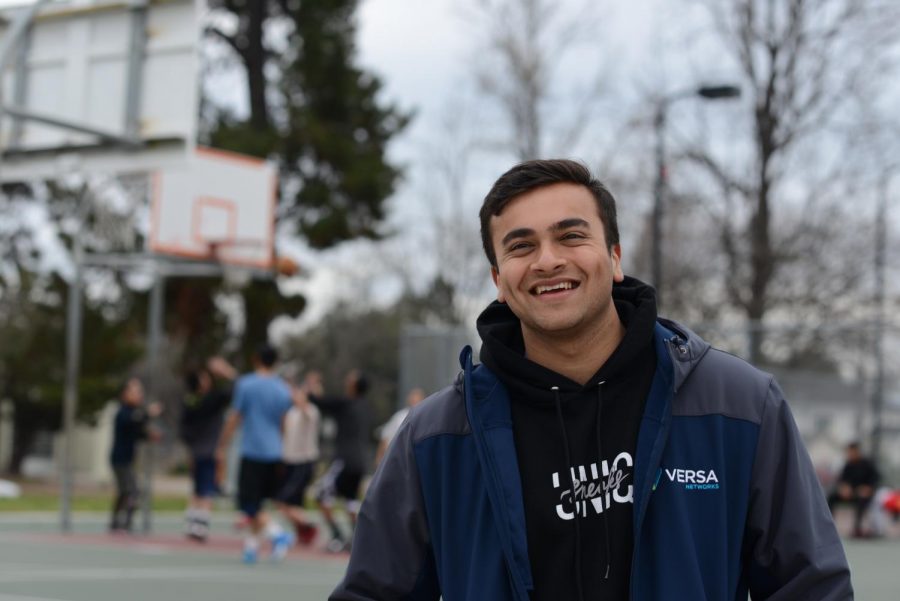
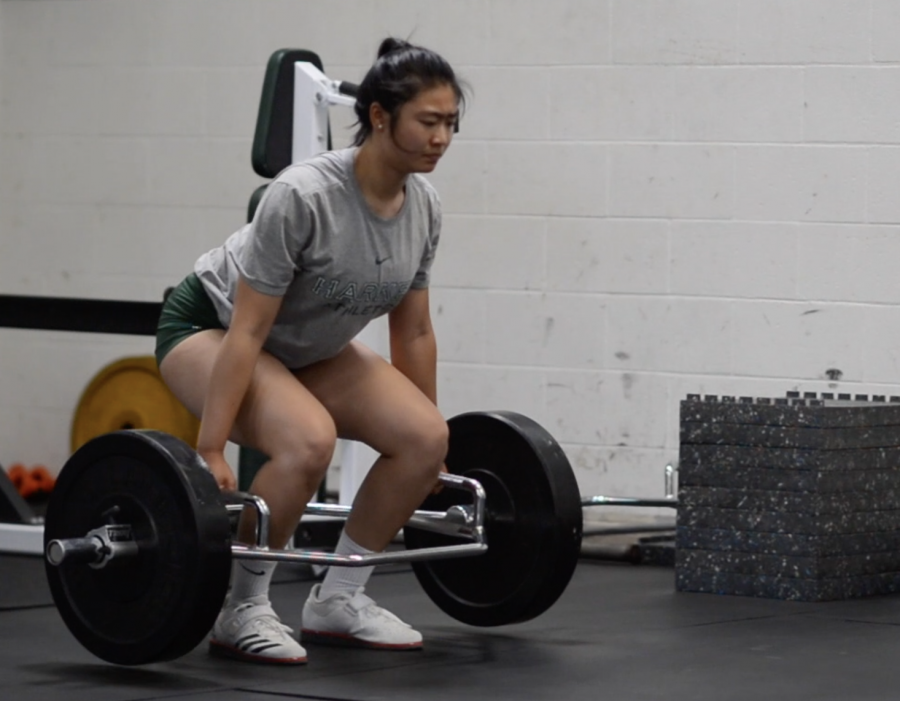
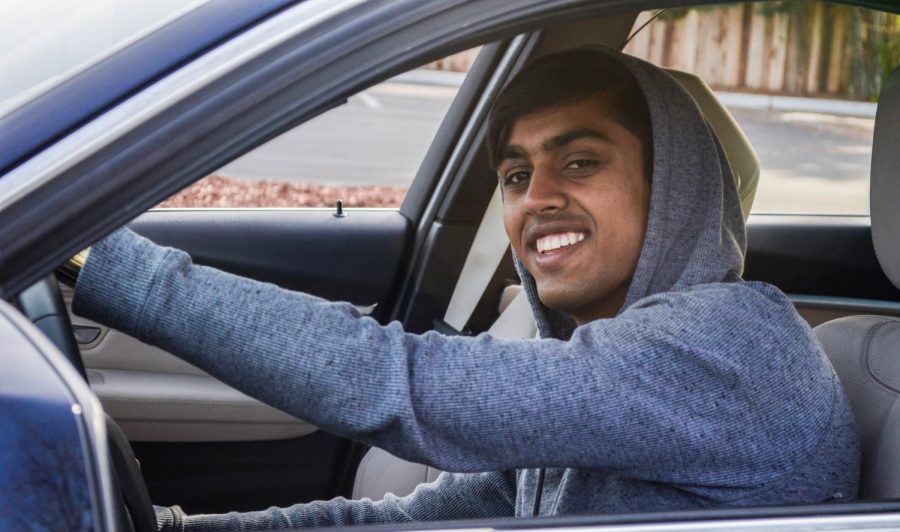
![“My slogan is ‘slow feet, don’t eat, and I’m hungry.’ You need to run fast to get where you are–you aren't going to get those championships if you aren't fast,” Angel Cervantes (12) said. “I want to do well in school on my tests and in track and win championships for my team. I live by that, [and] I can do that anywhere: in the classroom or on the field.”](https://harkeraquila.com/wp-content/uploads/2018/06/DSC5146-900x601.jpg)
![“[Volleyball has] taught me how to fall correctly, and another thing it taught is that you don’t have to be the best at something to be good at it. If you just hit the ball in a smart way, then it still scores points and you’re good at it. You could be a background player and still make a much bigger impact on the team than you would think,” Anya Gert (’20) said.](https://harkeraquila.com/wp-content/uploads/2020/06/AnnaGert_JinTuan_HoHPhotoEdited-600x900.jpeg)
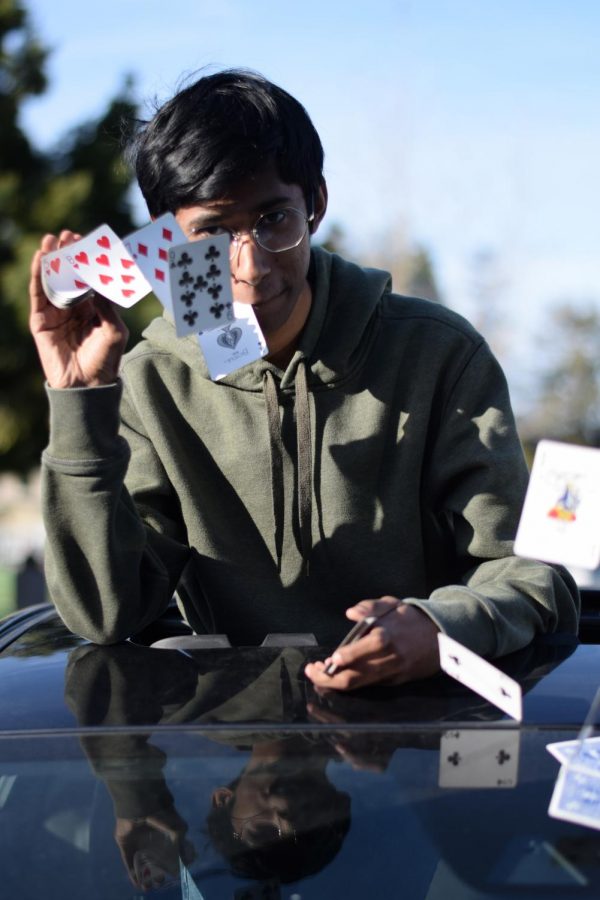
![“I'm not nearly there yet, but [my confidence has] definitely been getting better since I was pretty shy and timid coming into Harker my freshman year. I know that there's a lot of people that are really confident in what they do, and I really admire them. Everyone's so driven and that has really pushed me to kind of try to find my own place in high school and be more confident,” Alyssa Huang (’20) said.](https://harkeraquila.com/wp-content/uploads/2020/06/AlyssaHuang_EmilyChen_HoHPhoto-900x749.jpeg)

